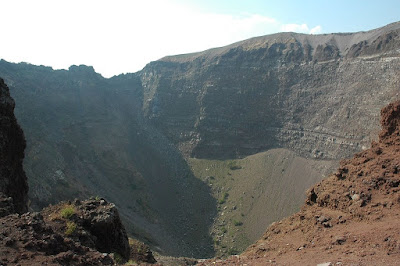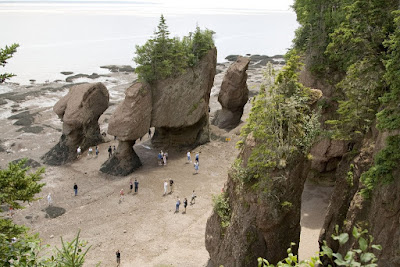
Mount Vesuvius with it's crater seen from a plane. (Source)
The most famous eruption of Mount Vesuvius happened in AD 79 that led to the destruction of the Roman cities of Pompeii and Herculaneum and the death of 10,000 to 25,000 people.

Mount Vesuvius seen from City of Pompeii which was destroyed in the eruption of AD 79. (Source)
The summit of Mount Vesuvius is open to visitors and tourists and there is a small network of paths around the mountain that are maintained by the park authorities on weekends. There is also an access by road to within 200 metres (660 ft) of the summit, but thereafter access is on foot only. There is a spiral walkway around the mountain from the road to the crater.

Inside the Mount Vesuvius crater where tourists can take a pictures. (Source)
The Mount Vesuvius area it is the most densely populated volcanic region in the world. The area around it was officially declared a national park on June 1995.

Mount Vesuvius seen from Italian City of Napoli. (Source)




